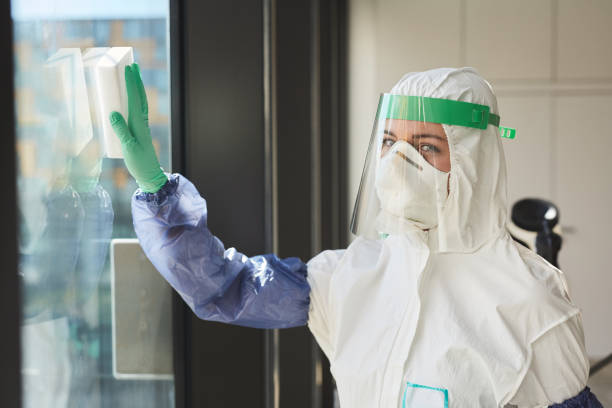Cleaning and Disinfection in Cleanrooms: Ensuring Sterile Manufacturing Environments

Introduction:
Cleanrooms are critical environments in various industries, especially in manufacturing sectors such as pharmaceuticals, biotechnology, electronics, and healthcare. Maintaining cleanliness and sterility in these controlled environments is of utmost importance to ensure product quality, safety, and regulatory compliance. Effective cleaning and disinfection practices are essential for maintaining sterile manufacturing environments in cleanrooms. This blog post explores the significance of cleaning and disinfection in cleanrooms, highlighting best practices and strategies for creating and maintaining sterile manufacturing environments.
I. Understanding Cleanrooms and Their Importance
- Definition and classification of cleanrooms
- Key industries relying on cleanrooms
- Significance of maintaining sterility for product quality and safety
II. Cleanroom Cleaning and Disinfection Standards
A. Regulatory Guidelines and Standards
- Overview of international regulatory bodies and guidelines (e.g., ISO, FDA)
- Compliance requirements for cleanroom cleaning and disinfection
B. Cleanroom Classifications and Cleaning Protocols
- Different cleanroom classes and associated cleanliness standards
- Cleaning protocols and frequencies based on cleanroom classification
III. Cleaning Procedures for Cleanrooms
A. Pre-Cleaning Preparations
-
Equipment and Supplies
- Selection of appropriate cleaning agents and disinfectants
- Proper use of cleaning tools and materials (e.g., lint-free wipes, mops)
- Adherence to safety protocols and handling procedures
2. Personal Protective Equipment (PPE)
- Importance of wearing appropriate PPE (e.g., gloves, gowns, masks, shoe covers)
- Ensuring proper donning and doffing procedures to prevent cross-contamination
B. Surface Cleaning and Disinfection
-
Removal of Contaminants
- Dry cleaning techniques (e.g., vacuuming, dusting) to remove loose particles
- Wet cleaning methods using suitable cleaners for specific surfaces
2. Disinfection Practices
- Selection of appropriate disinfectants based on cleanroom requirements
- Proper application and contact time for effective disinfection
- Consideration of compatibility between disinfectants and materials
C. Equipment Cleaning and Maintenance
- Cleaning and disinfection of cleanroom equipment (e.g., laminar flow hoods, biosafety cabinets)
- Calibration and maintenance of equipment to ensure accurate performance
- Documentation of cleaning and maintenance activities
IV. Cleanroom Monitoring and Validation
- Importance of regular monitoring and environmental sampling
- Validation of cleaning and disinfection effectiveness through microbial testing
- Documentation and record-keeping of monitoring results
V. Cleanroom Personnel Training and Awareness
- Training programs on cleanroom cleaning and disinfection protocols
- Emphasizing personal hygiene practices for cleanroom personnel
- Continual education and reinforcement of cleanliness standards
VI. Ensuring Cleanroom Integrity
- Controlling airborne contamination through proper filtration and ventilation systems
- Maintaining strict entry and exit procedures to prevent contamination
- Regular maintenance of cleanroom infrastructure and utilities
Conclusion:
Cleaning and disinfection in cleanrooms are essential for ensuring sterile manufacturing environments and upholding product quality and safety standards. By following regulatory guidelines, implementing proper cleaning procedures, and prioritizing personnel training, organizations can create and maintain cleanroom environments that meet stringent cleanliness requirements. Regular monitoring, validation, and adherence to best practices contribute to the overall integrity and effectiveness of cleanroom operations, ultimately enhancing product reliability and customer satisfaction.
Remember, maintaining a sterile manufacturing environment is a continuous commitment that requires collaboration, attention to detail, and a culture of cleanliness throughout the organization. By prioritizing cleaning and disinfection practices in cleanrooms, businesses can establish themselves as leaders in their respective industries and maintain a strong reputation for quality and reliability.



